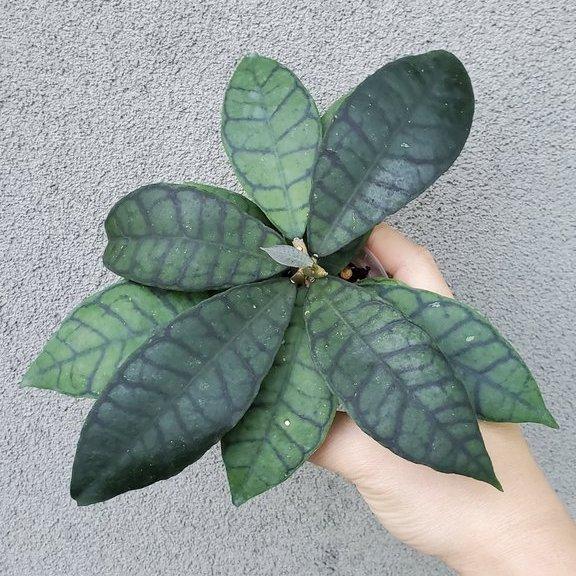
HOYA CALLISTOPHYLLA
Share
The attractive foliage of this thick-leaved plant makes it an interesting addition to a gardener’s collection. This species is an evergreen succulent climber which is known to have great disease-resistant features. Produces clusters of tiny and fragrant flowers. To keep it in perfect shape, here are things you need to know:
- Thrives in bright indirect sunlight
- Between 65 and 80ºF, best around 50-70%+ humidity
- Water when the top 1” to 2” is dry
- Hoyas are not toxic to humans and animals
- Mix of peat moss merged with perlite
- Spreads indefinitely, consider a generous space for optimal growth
In-Depth Care Guide
This species of Hoyas - also known as Stiff-leaved Hoya or Wax-plant Calistophylla - is pretty easy to care of. Here is what you need to know:
Since Hoyas have succulent characteristics, it is not necessary to water them every day. To grow a healthy plant, make sure that the 1" or 2" of the soil are slightly dry and only then water your plant.
Overwatering the plant may cause stress and infections. It goes the same way around: a very dry plant will grow orange/yellow leaves and lose its structural strength.
Pro tip: it is sometimes recommended to water the plant with low-chlorine and lukewarm water.
Like its fellow species, the Hoya callistophylla plant loves bright, dappled sunlight. Although it is a succulent plant, exposure to direct sun rays for extended periods may generate significant damage. Make sure that during the peak summer times your Hoya Callistophylla plant is placed in filtered sunlight.
Since sunlight frequency and intensity may change with different seasons, your Callistophylla’s current spot may have excessive sunlight falling on it. If that's the case, change its location.
In conclusion, make sure that the plant gets its fair share of bright, filtered sunlight. If placed in sunlight that is too direct or insufficient, the plant’s growth is adversely affected.
Your Callistophylla plant loves well-draining soils that have good aeration. Don't let any water accumulate in the roots, leading ton plant suffocation and death. The soil should only hold enough water to keep the plant hydrated at all times.
An ideal PH range for this evergreen species is approximately 6.3 to 7.5 (slightly acidic to neutral). A well-balanced pH is important for the plant: it improves growth and favorized an efficient nutrient absorption. You can use a mix of peat moss and perlite to make an excellent soil for your Callistophylla plant. This mix provides an aerated soil that will prevent water-logging and promote growth.
If you plan to grow your Hoya Callistophylla plant in a pot, make sure that the container has many holes at the bottom allowing excess water will drain.
Although Hoyas aren't heavy feeders, you can feed your Calistophylla plant with a good quality fertilizer about twice a week. Make sure that you place the fertilizer a few inches away from the stem to avoid any toxicity accident.
It is recommended to use a high-nitrogen fertilizer. Also, Calistophyllas produce flowers: it needs phosphorous to make healthy and fragrant blooms.
Hoya Callistophylla thrives in a very moist environment.. The high humidity keeps the plant's shape and leaf turgidity. However, make sure the humidity level is not too high: it would favorize fungal and bacterial infections.
The optimum humidity range for the Hoya Callistophylla plant is 50% to 70%. Since most households fall into that range, you shouldn't have to worry too much about humidity. However, if your environment is way too dry, you can use an air humidifier or spray your plant surroundings every other day. Make sure to not directly spray the leaves of the plant.
